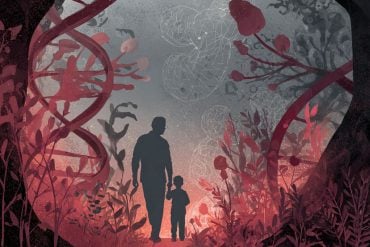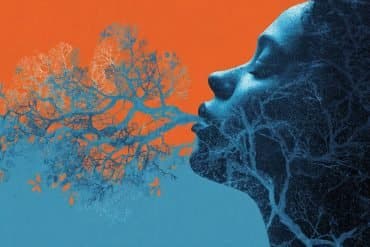Summary: Researchers link the harmonic structure in pop songs to their ultimate popularity. Findings suggest unexpected chord changes when followed by predictable harmonies help make a song popular.
Source: Frontiers.
Unsuspected chord changes, especially when followed by a predictable harmony, has been linked to a song’s popularity, as judged by its placement in the Billboard Top 100 charts.
Think of your favourite pop song. Can you explain why you like it so much? It might remind you of a memorable event, or move you in a way that makes you feel happy or sad. A new study, published in the open-access journal Frontiers in Human Neuroscience, has uncovered a simple, measurable explanation that can determine your preference for one song over another. It has linked the harmonic structure of pop songs to their placement in the charts.
“The most popular songs tend to include relatively rare chords, that is, they typically have high harmonic surprise,” says Norberto Grzywacz, a Professor of Neuroscience and Physics, who conducted this research at Georgetown University, Washington, USA. “These songs also tend to have choruses with relatively low harmonic surprise preceded by sections with many rare chords.”
Harmonic surprise can be described as where the music deviates from the listeners expectations. Scientists have predicted that these changes in structure could elicit a pleasurable reward response in the brain. In other words, harmonic surprise can increase the likelihood a song will be a hit.
Professor Grzywacz explains, “When listening to music, we enjoy some pieces and dislike others. Multiple reasons govern how much we like a piece of music, including compositional, emotional and cultural. We evaluated the role of a compositional element – the harmonic surprise. Surprise is important because it is a measure of new information; something that the reward centers of the brain recognise as being of value, leading to a positive emotional response. Therefore, our finding that the most popular songs tend to include surprising chords reflects our brains in-built preference.”
It is not just the surprise element of a song that the brain deems as pleasurable, but the return to normality too.
“The brain enjoys surprise only up to a point, because unexpected events indicate a failure of prediction,” says Professor Grzywacz. “Hence, the release of tension from surprising sections of a song to common choruses is also signalled positively by the reward centers. Our research reveals that the brain has a deep-rooted preference, which can affect whether people enjoy a piece of music.”
The study analyzed chord-by-chord transcriptions of the harmonies of 545 songs that entered the American Billboard Hot 100 charts between 1958 and 1991. Professor Grzywacz and his colleagues measured how far the chords of the song deviated from what was expected. For example, C major is usually followed by G and F major in Western tonal music and a change from this would be classed as a surprise. These measures of surprise were compared throughout the entire song and between song sections.
“We then used the peak position of the song in the weekly Billboard Hot 100 chart to determine its popularity,” says Professor Grzywacz.
It revealed that verses, not the choruses or bridges, accounted for much of the difference in harmonic surprise between the most and least popular songs in the Billboard Hot 100 chart. Professor Grzywacz and his colleagues suggest that high surprises in the harmony of a song, as well as high surprises followed by a lower-surprise section, can both contribute to the enjoyment of an unfamiliar piece of music.
Professor Grzywacz details where the research is heading next, “Our group is taking this line of inquiry in many directions. We are assessing whether harmonic surprise has a historical memory; does a song released in 1980 have to be surprising relative to songs released in that year, or to songs released in previous years – 1979, 1978, 1977, …or 1950…? We have a theory that chords from past music matter for surprise in new songs. For example, imagine that someone today composes a piece of music like Mozart. They would not be deemed a creative genius, even if the composition was excellent.”

The group also hopes to measure the effect of harmonic surprise – how big it needs to be to make a song popular. “We’ve composed artificial music that have different levels of surprise and contrasts between high and low surprise sections. Volunteers will evaluate preference for these pieces of music, to assess how much these factors can affect their preference,” says Professor Grzywacz.
He continues, “My colleagues and I are performing similar measurements and experiments with portrait paintings. Our overall goal is to use this knowledge to develop a general theory of how the brain experiences beauty in art.”
Funding: This research was funded by National Science Foundation.
Source: Melissa Cochrane – Frontiers
Image Source: NeuroscienceNews.com image is in the public domain.
Original Research: Full open access research for “A Statistical Analysis of the Relationship between Harmonic Surprise and Preference in Popular Music” by Scott A. Miles, David S. Rosen and Norberto M. Grzywacz in Frontiers in Human Neuroscience. Published online May 18 2017 doi:10.3389/fnhum.2017.00263
[cbtabs][cbtab title=”MLA”]Frontiers “A Song’s Structure Can Be Linked to Its Popularity.” NeuroscienceNews. NeuroscienceNews, 23 August 2017.
<https://neurosciencenews.com/song-structure-popularity-7357/>.[/cbtab][cbtab title=”APA”]Frontiers (2017, August 23). A Song’s Structure Can Be Linked to Its Popularity. NeuroscienceNew. Retrieved August 23, 2017 from https://neurosciencenews.com/song-structure-popularity-7357/[/cbtab][cbtab title=”Chicago”]Frontiers “A Song’s Structure Can Be Linked to Its Popularity.” https://neurosciencenews.com/song-structure-popularity-7357/ (accessed August 23, 2017).[/cbtab][/cbtabs]
Abstract
A Statistical Analysis of the Relationship between Harmonic Surprise and Preference in Popular Music
Studies have shown that some musical pieces may preferentially activate reward centers in the brain. Less is known, however, about the structural aspects of music that are associated with this activation. Based on the music cognition literature, we propose two hypotheses for why some musical pieces are preferred over others. The first, the Absolute-Surprise Hypothesis, states that unexpected events in music directly lead to pleasure. The second, the Contrastive-Surprise Hypothesis, proposes that the juxtaposition of unexpected events and subsequent expected events leads to an overall rewarding response. We tested these hypotheses within the framework of information theory, using the measure of “surprise.” This information-theoretic variable mathematically describes how improbable an event is given a known distribution. We performed a statistical investigation of surprise in the harmonic structure of songs within a representative corpus of Western popular music, namely, the McGill Billboard Project corpus. We found that chords of songs in the top quartile of the Billboard chart showed greater average surprise than those in the bottom quartile. We also found that the different sections within top-quartile songs varied more in their average surprise than the sections within bottom-quartile songs. The results of this study are consistent with both the Absolute- and Contrastive-Surprise Hypotheses. Although these hypotheses seem contradictory to one another, we cannot yet discard the possibility that both absolute and contrastive types of surprise play roles in the enjoyment of popular music. We call this possibility the Hybrid-Surprise Hypothesis. The results of this statistical investigation have implications for both music cognition and the human neural mechanisms of esthetic judgments.
“A Statistical Analysis of the Relationship between Harmonic Surprise and Preference in Popular Music” by Scott A. Miles, David S. Rosen and Norberto M. Grzywacz in Frontiers in Human Neuroscience. Published online May 18 2017 doi:10.3389/fnhum.2017.00263






